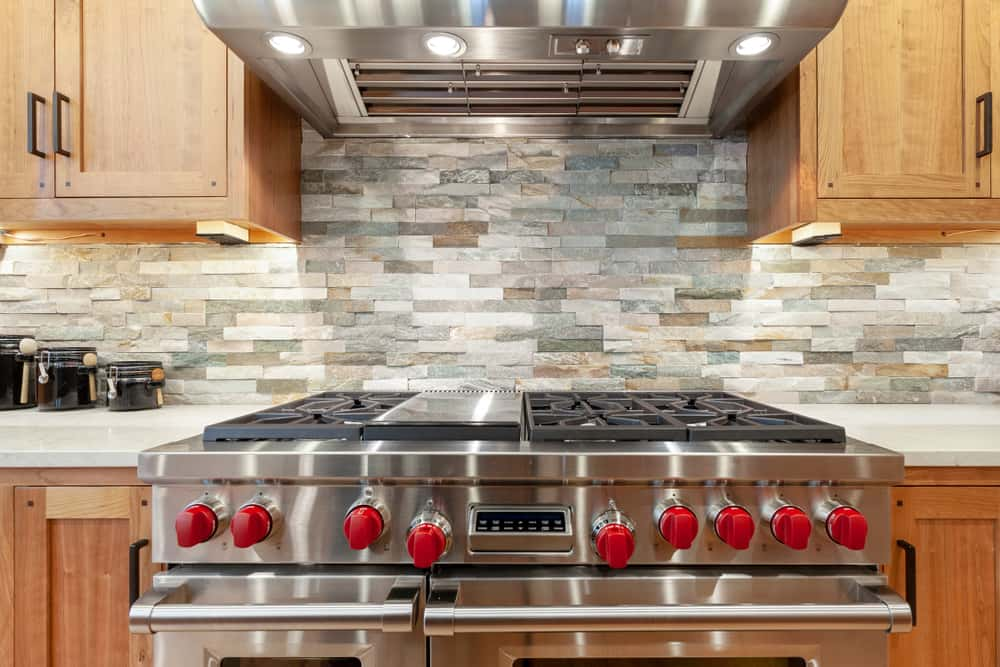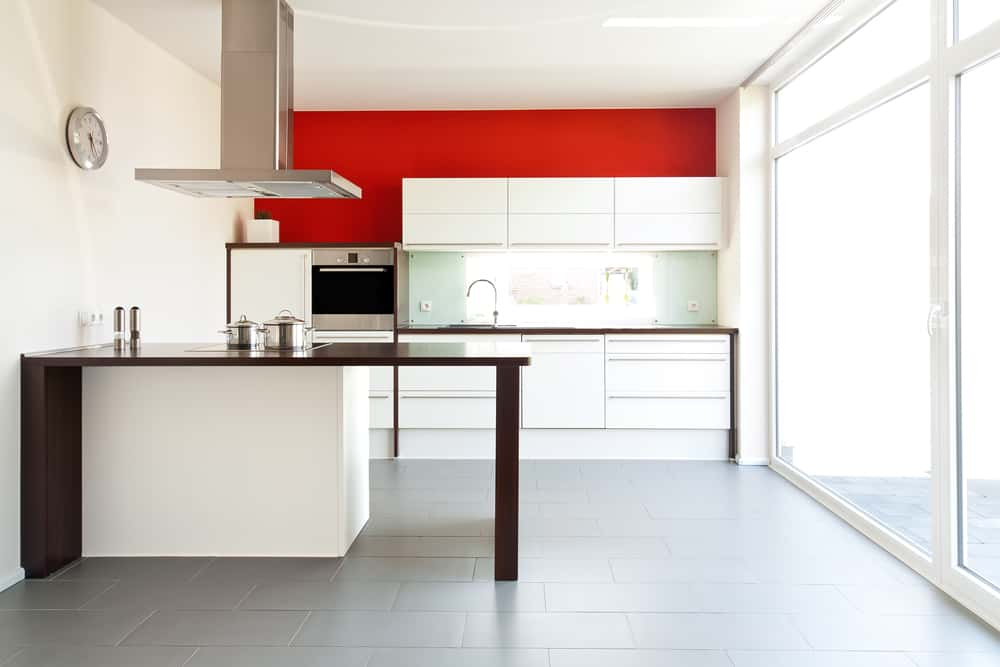Learn how to incorporate clean lines, natural materials, and functional organization into your kitchen with a Scandinavian kitchen design to not only create a serene and inviting space but also add a touch of elegance and simplicity to your most-used room.
Emphasizing the use of high-quality materials and a minimalistic aesthetic, this style, originally hailing from Norway and Sweden, is now a popular choice for kitchens worldwide.
Modern Scandinavian kitchen design is all about creating a functional, yet stylish space that is perfect for cooking, eating, and socializing. It is characterized by clean lines, minimal ornamentation, and the use of natural materials like wood, stone, and metal. The colour palette is typically light and neutral, with pops of colour added through accessories and artwork. This creates a bright, airy atmosphere that is perfect for a kitchen.
Make meal prep a breeze and create a serene space with these 10 ways to incorporate the Scandi magic into your kitchen design.

1. Clean Lines
Simplicity is key in Scandinavian kitchen design, which is reflected in the use of clean lines and minimal ornamentation. Avoid overly decorative elements and clear out clutter to create a sleek, streamlined space. Opt for furniture and equipment with plain geometric forms that not only serve a purpose but are also easy to maintain.

2. Natural Materials
Scandinavian kitchen design values the use of natural materials like wood and metal, so aim to incorporate them into the space as much as possible. Although it may not be feasible to eliminate plastic completely, find ways to incorporate more natural materials in your kitchen.
Consider wooden chopping boards instead of plastic, and opt for chairs made of wood or metal rather than plastic for a more authentic Scandinavian feel.

3. Lights
A key aspect of Scandinavian kitchen design is creating a well-lit and inviting space. To achieve this, be mindful of the lighting and make sure every corner is bright without being harsh. Opt for warm, golden-hued lights rather than cold, unfriendly fluorescent bulbs. Use lighting as an opportunity to add some personality to the space, whether it’s through interesting pendant lamps or artistic recessed lights. And of course, take advantage of natural light as much as possible.

4. Organisation With Storage
Modern Scandinavian kitchen design emphasizes organization and preparedness, and the pantry is an excellent place to apply this principle. Sort your pantry items by function, such as dedicating a shelf for spices and another for grains and flour. Label all boxes and jars for easy identification. Utilize drawer separators to organize cutlery by type. This not only saves time but also makes it easy to find the ingredients and equipment you need when cooking.

5. Everything With a Purpose
Scandinavian kitchen design philosophy emphasizes the beauty of functional items, so avoid anything that adds unnecessary clutter to the space. Instead of displaying knick-knacks or showpieces, decorate with meaningful items such as a poster gifted by a friend. Remember that beautiful and functional utensils, equipment and cookware are all the decor the kitchen needs.

6. Green is Good
Bring some greenery into the kitchen by incorporating air-purifying plants such as aloe and snake plants. Not only do they provide a refreshing break from the heat of cooking, but herbs can also be used in cooking and can serve as decorative pieces. Remember to choose planters that complement the overall colour scheme of your kitchen.

7. Industrial Finishes
Scandinavian kitchen design features industrial elements such as concrete slabs, raw wood, simple steel sinks, and modular storage solutions. The overall aesthetic is characterized by minimalistic surfaces and raw materials.

8. Beautiful Backsplashes
Backsplashes are a great way to add both style and function to a minimalist Scandinavian kitchen design. They serve as a focal point while also providing a practical surface for cleaning up any stove-related mishaps. Take advantage of this opportunity to incorporate natural materials or a signature colour into your design. Experiment with interesting tile patterns to add visual interest to the space.

9. Efficient Equipment
Scandinavian design philosophy prioritizes efficiency, which means advocating for minimalism but also investing in the best quality for regularly used items. So, avoid purchasing anything that you won’t use regularly, but invest in high-quality equipment that you will use daily. This could include a top-of-the-line refrigerator, a high-quality blender for smoothies, or a great oven for baking. These investments will pay off in the long run as they consume less electricity and require less maintenance.

10. Pops of Colour
Scandinavian kitchen design often features a white or beige background, which creates the perfect canvas to showcase a few brightly coloured elements. A bold poster or a uniquely coloured piece of equipment can add visual interest to the space. The goal is to create a minimalistic, yet warm and inviting atmosphere. To add an extra touch of personality, consider incorporating a colour found in food, such as lemon yellow or the deep green of a mustard leaf.

Final Thoughts
These are just a few ways to incorporate the Scandinavian style into your kitchen design. Remember that less is more, but that doesn’t mean the space should be completely devoid of any decor. Elements such as pendant lights, hand-painted tiles, or colourful backsplashes can add personality to the room while still being functional. The ultimate goal of a Scandinavian kitchen is to create a functional and easy-to-use space. For more inspiration and functional designs of any sort, from living room designs to bedroom designs, visit your nearest HomeLane experience centre.
FAQs
1. What makes a kitchen Scandinavian?
A Scandinavian kitchen is a design style that originated in the Nordic countries of Scandinavia (Denmark, Norway, Sweden, Finland, and Iceland). It is characterized by its minimalist, functional, and simple design, which prioritizes clean lines and neutral colours, such as white, grey, and beige. In addition, natural materials such as wood, stone, and linen are frequently used in Scandinavian kitchens, to create a warm and inviting atmosphere. The focus is on functionality, so cabinets and counters are streamlined and uncluttered. Large windows are also a hallmark of Scandinavian kitchens, as they allow for plenty of natural light and create an open, airy feel.
2. How do I get a Scandinavian kitchen?
To achieve a Scandinavian kitchen, start with a neutral colour palette, such as white or light grey, and use it on your walls, cabinetry, and surfaces. Choose furniture and décor with simple, clean lines, and avoid ornate or overly decorative elements. Natural materials, like wood, stone, and linen, are key to the Scandinavian look, so incorporate these wherever possible. Use pops of colour with accessories like curtains, towels, or tableware in pastel shades like blue, green, or pink. Focus on functionality, and keep surfaces uncluttered and streamlined. Incorporate large windows to allow for plenty of natural light.
3. What is the Scandinavian Colour scheme?
The Scandinavian colour scheme typically comprises neutral colours such as white, grey, beige, and black, with accents of pastel shades like blue, green, or pink. Natural wood tones are also commonly used. The goal is to create a calm, serene environment, which is why neutral colours are preferred. The use of pastel accents is meant to add a touch of colour and interest to the space, without overwhelming it. The neutral base also allows for flexibility, making it easy to switch up the accents as desired.




